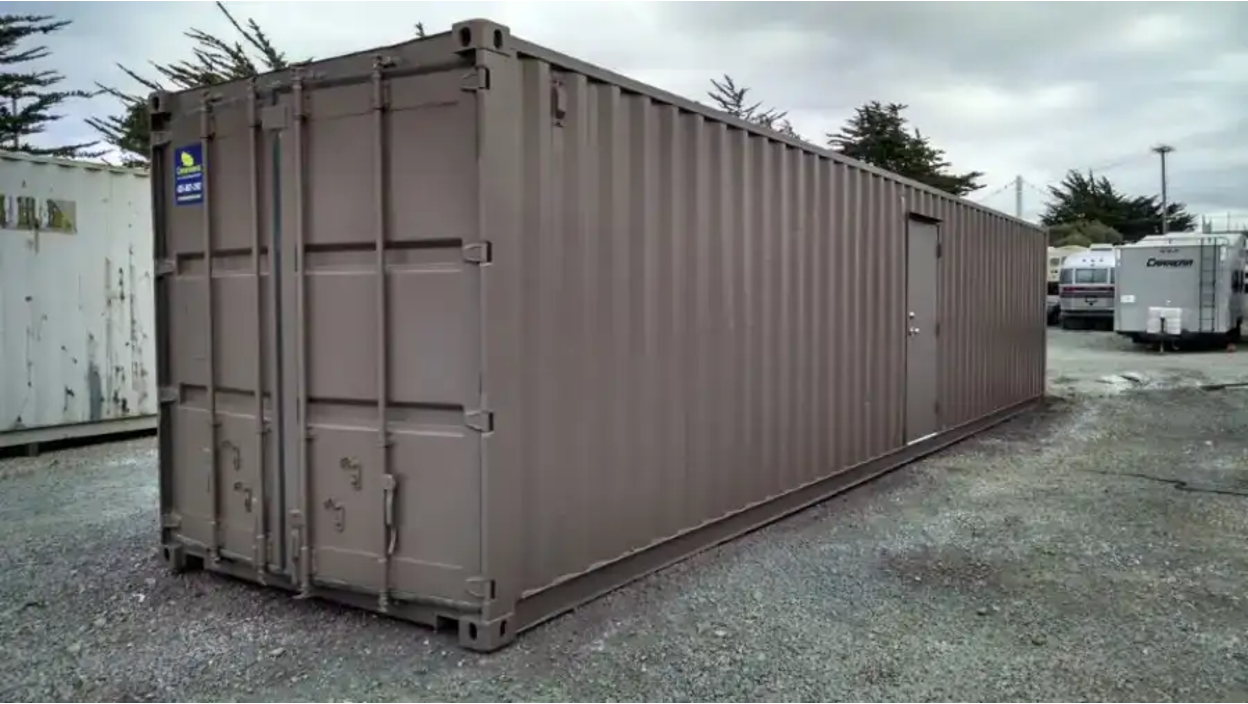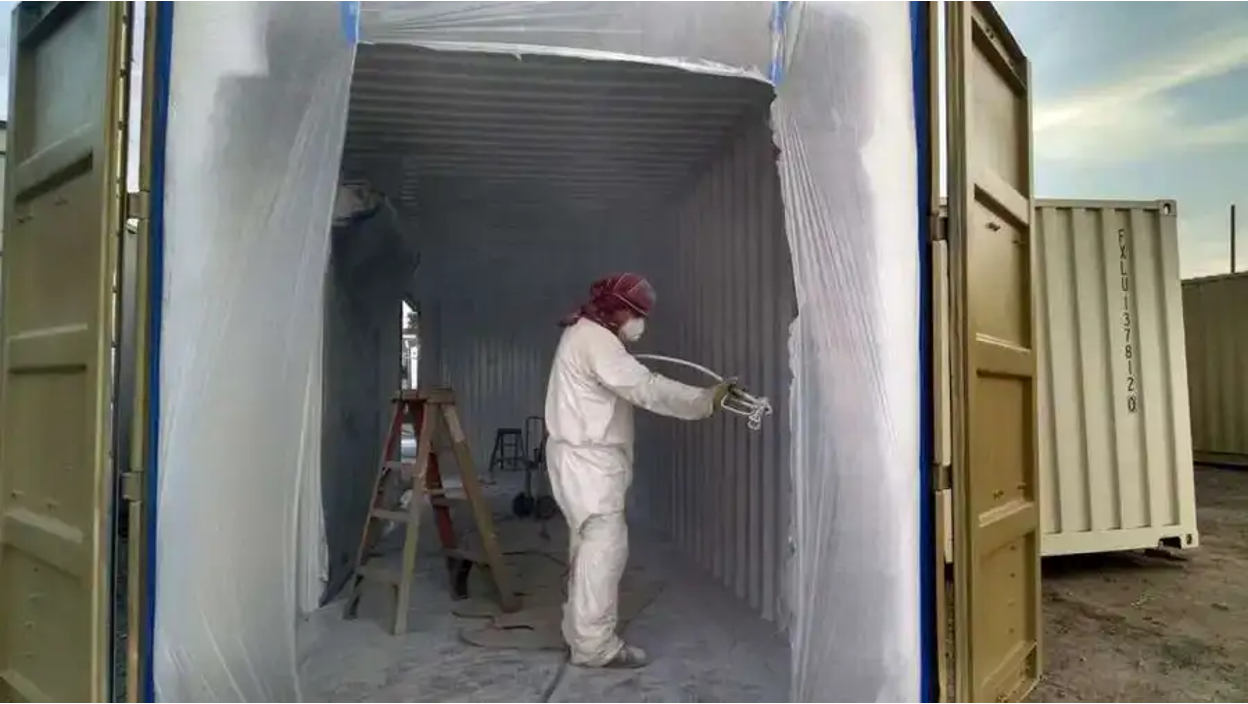Latex Paint For Shipping Containers: What You Should Know
Get a quoteUsing Latex Paint on Shipping Containers: What to Know
Key Takeaways
- Latex paint is easy to apply and has a quick drying time.
- It's important to prepare the container's surface thoroughly before painting so the paint adheres properly.
- This type of paint is more environmentally friendly compared to other options as it emits fewer harmful fumes.
- Regular maintenance and inspections are important to keep the paint looking fresh and to prevent rust.
- Conexwest’s highly experienced fabrication team knows how to perfectly paint your shipping container.
Understanding Latex Paint for Shipping Containers
Latex paint, often referred to as water-based paint, is a popular choice for shipping containers due to its versatility, ease of use, and eco-friendly properties. It primarily consists of:
- Water: The main solvent used in the formulation.
- Acrylic Resins: These serve as the binder that holds the paint together and provides adhesion to surfaces. Despite the name "latex," modern latex paints do not contain natural latex rubber; instead, they use synthetic resins.
- Pigments: These provide color and opacity to the paint.
- Additives: Various substances are included to enhance performance characteristics such as durability, drying time, and mildew resistance.
Conexwest, a leader in shipping and storage solutions based in Northern California, offers new, used, and refurbished containers from 10ft to 45ft, with fast delivery within 3–7 days and container fabrication options like adding shelves and locks. We serve over 10,000 customers nationwide, including prestigious clients like the U.S. Navy and Google. As an ISO 9001 and AWS-certified company, we ensure top quality and competitive pricing. |
Benefits Of Using Latex Paint On Shipping Containers

Latex paints are affordable and have a wide range of color options.
1. Non-toxic and Environmentally Friendly
Latex paint is water-based, which means it contains fewer volatile organic compounds (VOCs) compared to oil-based paints. This results in a non-toxic product that is safer for both the environment and your health.
2. Durability and Flexibility
Latex paint is highly elastic, which allows it to expand and contract with temperature changes. This flexibility helps prevent issues such as fading, cracking, and peeling over time, making it a reliable choice for shipping containers that endure varying weather conditions.
3. Faster Drying Time
Typically, a coat can dry within an hour, allowing for multiple layers to be applied in a single day. This efficiency reduces downtime and enables quicker use of the container after painting.
4. Ease of Application and Touch-Up
Latex paint is generally easier to apply than oil-based alternatives due to its smooth consistency. It covers well and can be easily touched up if needed.
5. Aesthetic Enhancement
A fresh coat of latex paint can significantly improve the visual appeal of shipping containers. It allows for customization in color, which can enhance branding opportunities for your business or simply provide a more polished look for personal use.
6. Protection Against Corrosion
Applying latex paint provides a protective layer that helps shield shipping containers from rust and corrosion caused by exposure to moisture and other environmental factors. This protective quality extends the lifespan of the container, making it a cost-effective investment in the long run.
Comparing Latex Paint With Other Options
Latex Paint | Acrylic Paint | Oil-Based Paint | Marine Grade Paint | |
Base | Water | Water | Oil | Oil or Acrylic |
VOC Content | Low (fewer VOCs) | Moderate | High | Moderate to High |
Drying Time | Fast (1 hour per coat) | Moderate (4-12 hours per coat) | Slow (up to 24 hours) | Moderate (varies by type) |
Cleanup | Soap and water | Soap and water | Solvents required | Solvents required |
Durability | Good for interiors, moderate for exteriors | Excellent for both interiors and exteriors | Very durable | Very durable |
Flexibility | High (less likely to crack or peel) | Very high | Low (can become brittle) | High (designed for harsh conditions) |
Application Ease | Easy to apply and touch up | Moderate ease | More challenging | Moderate ease |
Cost | Generally lower | Higher than latex | Variable, often higher | Higher due to specialized formulation |
Best Use Cases | Interior walls, low-traffic areas | Outdoor applications, high moisture areas | High-traffic areas, industrial use | Shipping containers, marine environments |
Color Options | Wide range available | Wide range available | Limited, may yellow over time | Limited, often specific colors |
Maintenance Tips For Latex Painted Containers
1. Regular Cleaning
- Frequency: Clean your container every few months to remove dirt, grime, and pollutants that can degrade the paint over time.
- Method: Use a pressure washer or hose with a strong water flow. For stubborn stains, you may use a mild detergent to help break down the grime.
2. Inspect for Damage
- Visual Checks: Regularly inspect the container for signs of wear such as scratches, chips, or areas where the paint has faded.
- Rust Inspection: Pay special attention to joints and corners where rust is likely to develop. Early detection is important for preventing extensive damage.
3. Touch-Up Painting
- Prompt Repairs: Address any chips or scratches immediately with touch-up paint to prevent rust from forming underneath the paint layer.
- Application: Use the same latex paint used initially for consistency in color and finish.
4. Weatherproofing
- Sealants: If your container is exposed to harsh environmental conditions, consider applying a clear sealant every few years to provide an extra layer of protection against moisture and UV rays.
- Drainage: Check that the container is positioned to avoid standing water and has good drainage to minimize rust formation.
5. Check Seals and Gaskets
- Integrity of Seals: Regularly check door seals and gaskets so they are intact. Damaged seals can allow water ingress, which may damage both the interior and exterior paint.
6. Avoid Direct Contact with Corrosive Materials
- Protection from Chemicals: Keep corrosive materials away from the container’s surface to prevent damage to the paint.
- Vegetation Control: Position your container away from overgrown vegetation that can trap moisture against the metal.
When to Repaint
You should consider repainting your latex-painted shipping container when you notice:
- Substantial Fading: If the color appears significantly faded due to sun exposure.
- Extensive Damage: Areas with peeling or cracking paint that expose the metal underneath.
- Rust Formation: Visible rust spots despite regular maintenance efforts.
How Conexwest Can Help You Paint Your Shipping Container

Latex paint is easy to apply, but it’s best done by professionals.
We at Conexwest provide a comprehensive solution for painting your shipping container - internally and externally. Here’s why our service stands out:
1. Quality Materials
We use premium DTM (Direct-To-Metal) container paint, which is formulated to adhere well to metal surfaces and provide long-lasting protection. Before application, we make sure that any rusted areas are cleaned down to bare metal and treated with a heavy-duty primer to create a solid foundation for the paint.
2. Custom Color Options
While our standard shipping container color is "Light Ivory," we provide a wide variety of custom colors to suit your preferences. And, don’t worry if you are confused. Our custom design team is here to assist you in selecting the perfect color for your container.
3. Expert Guidance
Our experienced team can provide suggestions and examples from past projects to help inspire your design. If you have specific ideas in mind, we can work with you to bring those visions to life.
4. Efficient Process
Our streamlined approach means your container is painted efficiently without compromising on quality.
5. Professional Finish
With our skilled technicians handling the painting, you can trust that the finish will be professional and durable. We use techniques that provide an even coat, enhancing both the appearance and protective qualities of your container.
6. Ongoing Support
After your container is painted, we don’t just leave you hanging. We provide ongoing support and maintenance tips to help you keep your container in excellent condition for years to come.
Frequently Asked Questions (FAQs)
- How long does latex paint last on a shipping container?
Latex paint can last anywhere from 5 to 10 years on a shipping container, depending on factors like environmental exposure and maintenance. Regular touch-ups and inspections can help extend its lifespan.
- Can I paint over the existing container paint with latex?
Yes, you can paint over existing container paint with latex as long as the surface is properly prepared. This involves cleaning, sanding any peeling areas, and applying a primer if necessary.
- Can I use regular house paint on a shipping container?
It’s not advisable to use regular house paint on shipping containers because they are not designed to withstand outdoor conditions. Instead, opt for specialized paints like marine-grade or direct-to-metal (DTM) paints that provide better adhesion and durability.
- How many coats of paint should I apply?
For optimal results, it’s recommended to apply at least two coats of paint. This gives even coverage and maximum protection, especially when changing colors or using lighter shades over darker ones.
- What other ways can Conexwest help me customize my shipping container?
We provide extensive customization services for your shipping containers. You can modify your container to include features such as windows, doors, insulation, electrical wiring, shelving systems, and more to suit your requirements.
